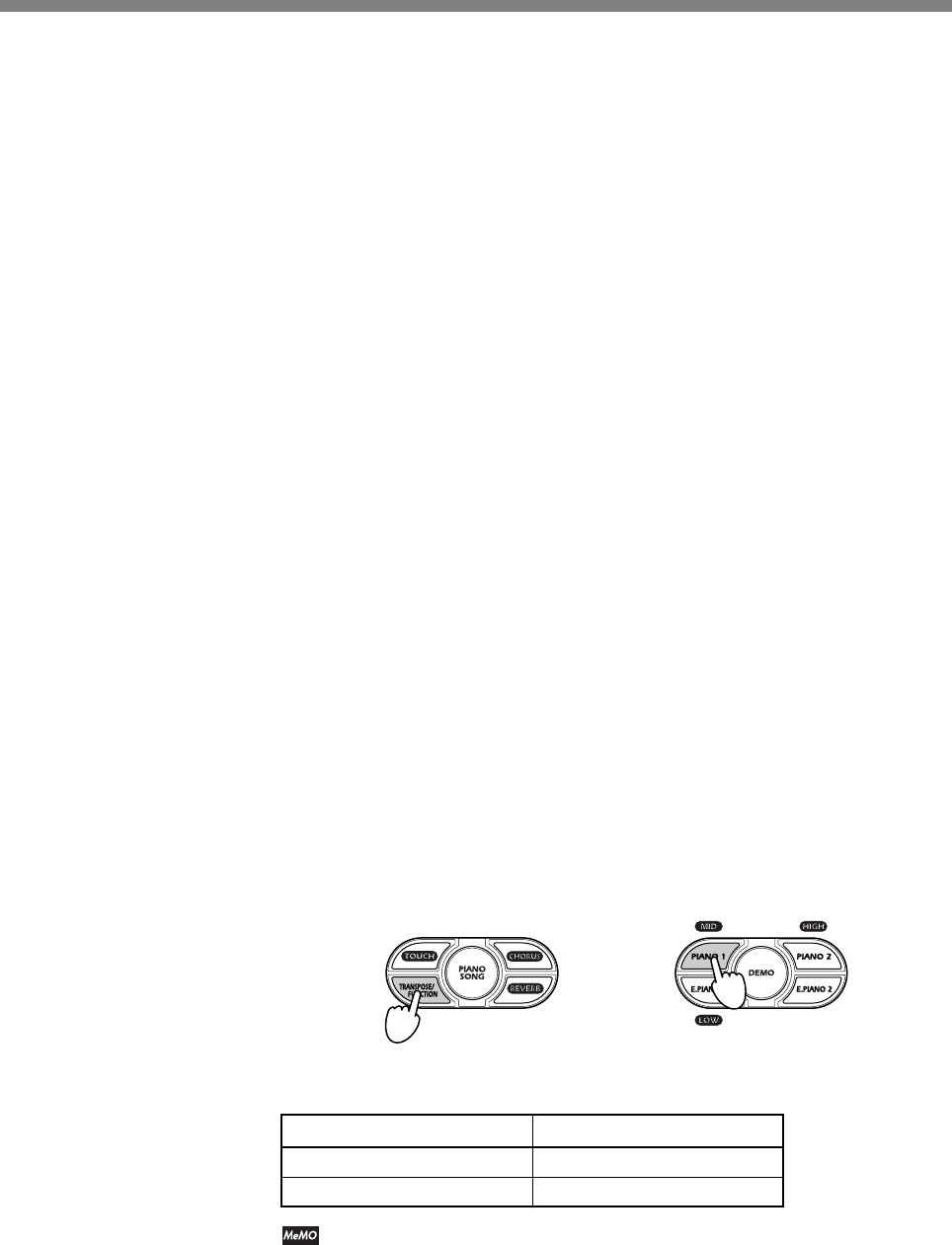
33
Using the Piano as a Multitimbral Tone Generator
Your piano can also operate as a 16-part multitimbral tone generator.
Connect a sequencer or similar MIDI control device to the piano, and then
use that device to drive the piano's sound.
1. Connect one end of a MIDI cable to the MIDI IN jack on the piano,
and the other end to the MIDI OUT jack of the sequencer or other
device that you will use to control the piano.
2. Transmit the performance data from the controlling device. (Refer
to the controlling device’s instruction manual.)
The piano will play the performance data sent by the control device. If you
have not disabled Program Change, the piano will change sounds in
accordance with the Program Change messages received from that device.
■ The Local On/Off Setting
The Local setting determines whether the piano keyboard produces sound (a) at
both the piano and the external MIDI device, or (b) at the external device only.
If Local is ON, then when you hit a key the piano will play the sound from its
tone generator and will also send the sound to be played on the external
device—so that you will hear the note played from both places. If Local is OFF,
the piano will be silent and only the external device will play.
The typical setting is Local ON. You should set Local to OFF, however, if you
wish to use the piano as a master keyboard to drive the voices provided by an
external tone-generator module or external keyboard. Another time to set Local
OFF is if you have connected a sequencer that is set to echo the data that it
receives. In this case, setting Local to OFF will prevent the sound from playing
twice: once when you hit the key and then again when the data is returned. To
change the Local setting, proceed as follows.
1. Hold down TRANSPOSE/FUNCTON and press PIANO 1.
+
Pressing PIANO 1 toggles the Local setting On and Off.
“Local” Setting PIANO 1 Lamp
ON Lit
OFF Dark
When you turn the power off, the Local setting returns to Off.


















